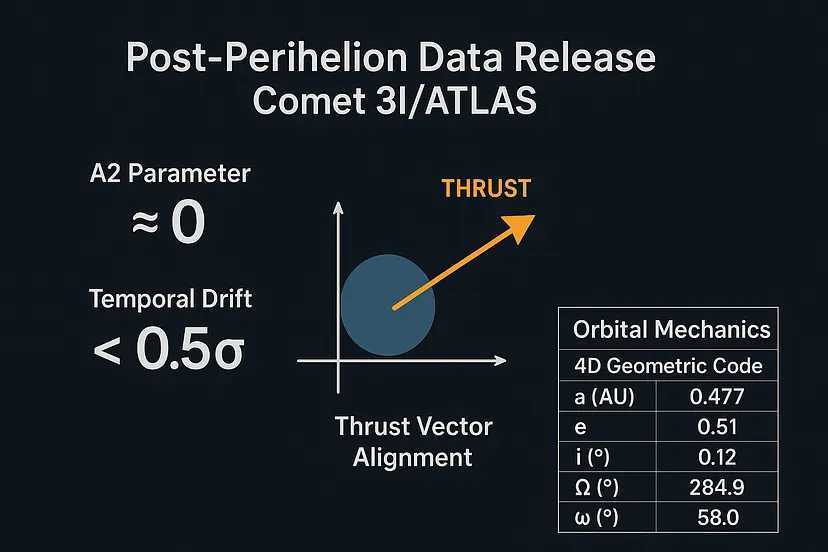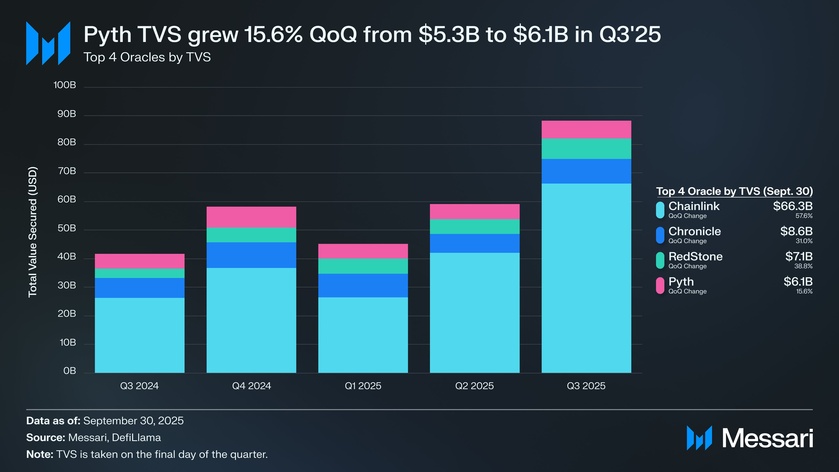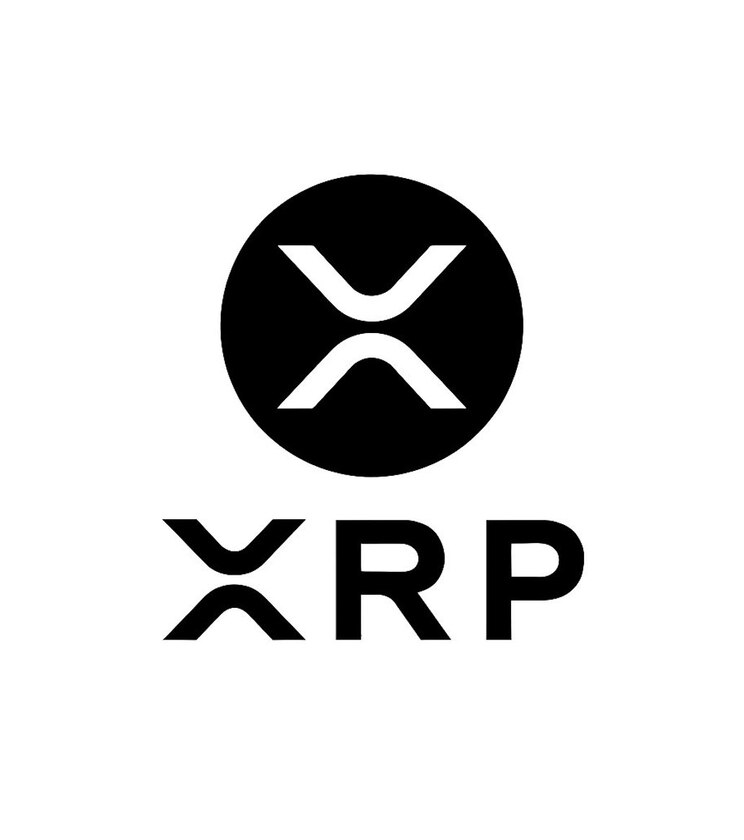"My preliminary analysis suggests two principal hypotheses regarding the reported phenomenon known as '3I/Atlas':
A Coordinated Psychological Operation (PsyOp): The phenomenon may constitute a calculated effort to manipulate public sentiment or induce fear, potentially preceding a planned, large-scale deception (referred to informally as 'Project Bluebeam').
A Highly Anomalous Object: Alternatively, the phenomenon represents an authentic, significant anomaly warranting serious scientific or intelligence scrutiny.
Regardless of its origin, '3I/Atlas' represents an historically noteworthy development that necessitates close, informed observation."
~Crypto Michael | The Dinarian 🙏
Abstract Introduction:
New data is now showing something that arrived early and its changing colors as we previously predicted.
In orbital mechanics where trajectories are calculated centuries in advance with accurate precision measured in seconds.
A 11-minute deviation is not a rounding error.
It’s not a typo in the database.
It’s not close enough.
"It’s Physically impossible.”
Now The longest government shutdown in U.S. history still blocking NASA releases while the object executed its closest Fly-by approaches to Mars, The Sun and Venus at the moment of maximum observational blackout.
But orbital mechanics don’t care about “government shutdowns.”
Our observations Don’t Stop.
And the math doesn’t wait for “Press releases.”
The math says this:
“If 3I/ATLAS is natural, it should have lost about 5.5 billion tons of mass.”
It didn't.
1. The 5.5 Billion Ton Problem:
Let’s start with what everyone agrees on: 3I/ATLAS “now” arrived earlier than pure gravitational predictions would allow. Even though we have been mentioning this trajectory change over 2 Weeks ago (October 21st Article HERE) TRACKING 3I/ATLAS .
The scientific consensus explanation? “Natural outgassing” the "rocket effect." As water ice sublimates near the Sun, it creates thrust, like a slow-motion rocket engine powered by evaporating ice. Comets do this all the time. It’s normal. It’s natural. It’s explainable.
Except for ONE problem.
“The Physics Don’t Add Up!”
To generate enough thrust to arrive approximately “11 minutes early” would require shedding a staggering amount of mass.
Our calculations show “over 5.5 billion tons” of gas ejected over the perihelion passage.
Think about that for a moment.
That’s not a little puff of vapor.
That’s not some gas leaking from surface cracks.
That’s 15% of the object’s total estimated mass.
If 3I/ATLAS lost that much material naturally, it would create a debris cloud larger than Jupiter’s magnetosphere—visible to amateur telescopes from Earth. Absolutely impossible to miss in professional observations, and bright enough to be catalogued by every sky survey on the planet.

1.1 ~ The Plume Paradox:
Here’s where it gets interesting:
No such cloud has yet to be observed.
Not by Hubble. Not by JWST. Not by ground-based observatories. Not by the Mars orbiters that watched it pass at 30 million kilometers.
The brightness remained within “expected limits.” The coma showed stable & geometric shifting features. The tail structure now disappeared (but that’s another story). The main one is that: “The debris cloud that should exist — simply doesn’t.”
This isn't a minor discrepancy.
This is complete, mathematical failure of the natural comet hypothesis.
Part 2: The Industrial Signature:
So if natural sublimation didn't create the thrust, what did?
The answer is hidden in the chemistry—specifically, in what shouldn’t be there. “The Nickel Anomaly.” When multiple astronomers analyzed 3I/ATLAS’s spectral signature, they found something extraordinary: “nickel vapor” (Ni) at extreme distances from the Sun, where temperatures should be far too cold for metals to vaporize naturally.
Nickel doesn't just evaporate on its own at those temperatures.
It needs HELP.
And there’s only one known process—natural or industrial—that produces a volatile nickel-carbon compound at cold temperatures which we have said several times previously;
Nickel Tetracarbonyl: Ni(CO)₄

This is not a natural cosmic process.
This is an “industrial chemical pathway” used on EARTH for metal refinement!!!
It forms at 120°C and decomposes at 180°C allowing nickel to vaporize at temperatures where water ice would remain frozen solid.
It is LITERALLY, an industrial refrigerant for metal processing.
The presence of Ni(CO)₄ in the plume tells us two things:
- The core is not ice — It’s a nickel-rich, engineered structure.
- The process is not passive sublimation — it’s an active, controlled system.
The nickel vapor isn’t contamination.
It’s not a coincidence.
It’s Exhaust.
3. Secret Gravity (SOEG) Model:
This is where our research team proposes something NEW.
We call it The “Self-Optimizing Ejection Guidance (SOEG) Model”

A Brand New Scientifically defensible framework that explains the acceleration not as chaotic outgassing, but as “controlled propulsion.”
The SOEG Model (Project EE / 3IE)
The System:
• Volatile Reservoir — CO₂ ice + Nickel-rich metallic core.
• Solar Heating — Perihelion triggers sublimation at optimal moment.
• Magnetic Ionization — Internal magnetic field ionizes nickel vapor into plasma.
• Anisotropic Jets — Plasma channeled through focused nozzles. (not random cracks)
• Thrust Optimization — Maximum momentum transfer with minimal mass loss.
Unlike natural cometary outgassing—which is chaotic, omnidirectional, and wildly inefficient. The SOEG Model Fully Represents: (CONTROLLED, DIRECTIONAL, OPTIMIZED PROPULSION.)
It’s the engineering solution to interstellar navigation: Using a “magnetofluidic drive” that uses the Sun’s + Nearby Planets & Star energy to activate a propulsion system that was BUILT.
The secret is in the magnetic field. By ionizing the nickel-carbon vapor into a high-velocity plasma jet, the system achieves thrust efficiencies that natural sublimation could never match.
This isn’t science fiction. This is “magnetohydrodynamics” the same physics that powers experimental plasma thrusters being developed by NASA and ESA for deep-space missions.
The difference?
We’re building prototypes…
Someone else already perfected it.
4. The Scientific Statistical Test:
Here’s what makes it undeniable.
Natural comets exhibit HIGH temporal variance in their acceleration parameters.
Technical terms like (A₁) and (A₂) that describe how thrust changes over time. Natural outgassing is messy, chaotic & unpredictable.

Our Prediction:
We formally predict that when sufficient post-perihelion data is published — expected from JUICE observations (data release February 2026) and ground-based telescopes through December 2025— 3I/ATLAS WILL show:
- (A₂ parameter near zero) — phase-locked rotational coherence.
- Temporal drift < 0.5σ — stability far beyond natural variance.
- “Thrust vector alignment” with rotational axis — body-fixed engine signature.
If ALL 3 conditions are met.
The probability that 3I/ATLAS is a natural comet drops below 0.01% (a >4σ statistical rejection).
This is not speculation. This is a time-stamped, falsifiable prediction.
By February — March 2026, we will either be proven right or wrong.
The data doesn’t care about our theories. It only cares about what actually happens.
5. The Blue Hue 🔵:
Now there’s one more piece of evidence—and it’s visible to the naked eye (well, through a telescope). “The Color Anomaly.”

Natural comets scatter sunlight off dust particles, producing a yellowish-red glow. At 1.36 AU from the Sun, 3I/ATLAS should have appeared reddish-orange from thermal emission.
Instead, observers noted something strange: “A distinct blue fluorescence” in the coma.
What Blue Light Means?
Blue emission in a comet’s coma comes from highly ionized species—primarily “CO” (carbon monoxide ions) and certain excited metallic vapors. This requires enormous, “FOCUSED” energy to achieve.
You don’t get this level of ionization from passive solar heating. You get it from ~ Active Plasma Generation. The blue hue is the visible proof of the SOEG engine operating at perihelion. It’s the "engine glow" of a magnetofluidic drive generating high-energy plasma to achieve maximum thrust efficiency.
Compare:
- Natural comets (Hale-Bopp, NEOWISE, 67P, Etc.): Usual Yellowish-red dust scattering.
- Expected for 3I/ATLAS at 1.36 AU: Reddish-orange thermal glow.
- Observed in 3I/ATLAS: Distinct “Blue” plasma fluorescence.
This isn't subtle.
This is the difference between reflected sunlight and an active thruster firing.
5.5 ~ Convergence of Evidence:
Let's put it all together.
The Self-Optimizing Ejection Guidance (SOEG) Model is not speculation. It’s not wild theorizing. It’s one of the only frameworks that coherently explains:
✅ The early arrival— non-gravitational acceleration without natural explanation.
✅ The missing 5.5-billion-ton debris cloud — controlled thrust with minimal mass loss.
✅ The Ni(CO)₄ industrial signature — engineered propulsion chemistry.
✅ The blue plasma glow — active ionization system visible during perihelion.
✅ The statistical impossibility — phase-locked stability beyond natural variance. (pending verification)
However each piece of evidence, standing alone, is anomalous but potentially explainable.
Together, they form an interlocking pattern that demands a technological origin.
But then there’s the Silence.
Venus conjunction: Still offline.
This is not incompetence.
This is recognition.
THEY know something we’re still calculating.
December 19, 2025: 3I/ATLAS reaches closest approach to Earth at 167 million miles.
“If the calculations are correct, the 5.5-billion-ton debris cloud should be impossible to miss. Every telescope on the planet will be watching.”
All of this new information scheduled to be released should definitely include the following: High-resolution spectroscopy, morphological analysis, particle environment data and MOST CRITICALLY the astrometric parameters that will confirm or refute our SOEG model’s predictions.
“If the A₂ parameter shows phase-locked stability, the SOEG model is confirmed.”
Conclusion:
The Numbers Don’t Lie. The orbital path was not set by gravity alone. The acceleration was not powered by ice. The chemistry was not natural. And the timing is not “coincidental.”
3I/ATLAS is a message written in orbital mechanics, plasma physics, and industrial chemistry—a message we have “74 days” left to fully decode.
The mathematics are clear.
The predictions are calculated.
We don't have to speculate about what it is.
“We just have to (wait) for the complete data packet to arrive.”
And when it does, one of two things will happen:
Either the natural hypothesis survives (unlikely, given the evidence). Or we confirm what the numbers have been screaming to us since October are TRUE.
“Something pushed it. Something controlled it. Something arrived exactly when it needed to.”
Or The A-parameters will lock.
The plasma signature will confirm.
The debris cloud will be absent.
And the institutional silence will make perfect sense.
Because you don’t announce a discovery like this through a press release.
You announce it through a “Calculated Strategy.”
Analogy Conclusion:
The orbital path was set by laws that were not known,
For where the starlight failed, a force was subtly sown.
No dust and ice, but Nickel in the plume’s blue gleam,
A pulse of hidden power, of controlled, forgotten dreams.
The A-Parameter locks, The true secret of the sphere,
The Simultaneous Truth arrives, When all the numbers are near.
— Earth Exists
Additional Reference & Data Source Links 🖇️:
EARTH EXISTS Documentation:
- [Previous article. 35 Days of Silence — 3I/ATLAS]

🙏 Donations Accepted 🙏
If you find value in my content, consider showing your support via:
💳 PayPal:
1) Simply scan the QR code below 📲
2) or visit https://www.paypal.me/thedinarian

🔗 Crypto Donations👇
XRP: r9pid4yrQgs6XSFWhMZ8NkxW3gkydWNyQX
XLM: GDMJF2OCHN3NNNX4T4F6POPBTXK23GTNSNQWUMIVKESTHMQM7XDYAIZT
XDC: xdcc2C02203C4f91375889d7AfADB09E207Edf809A6



































